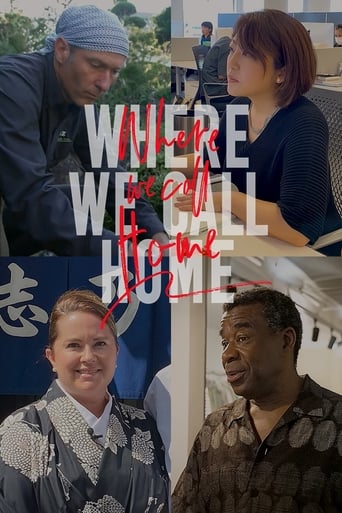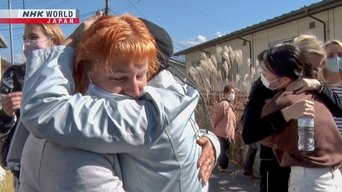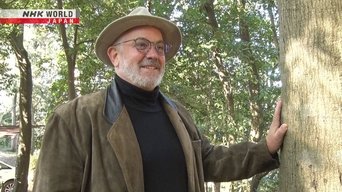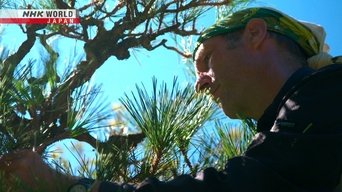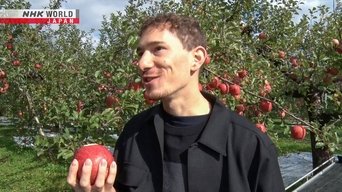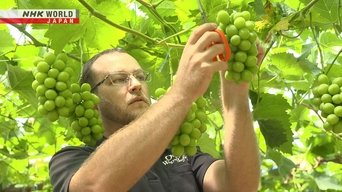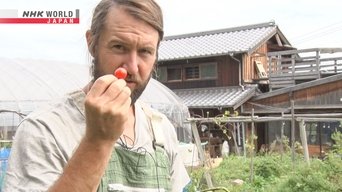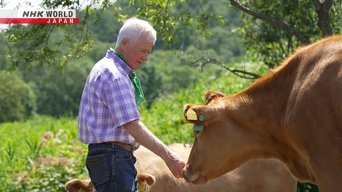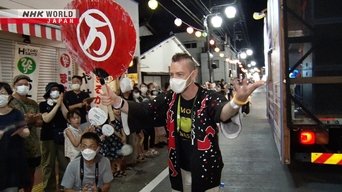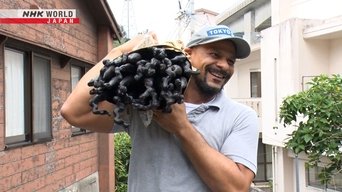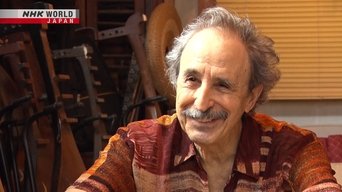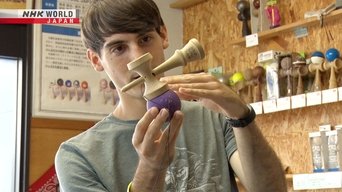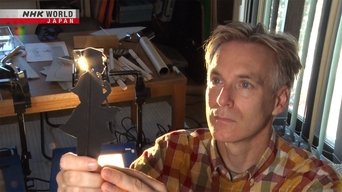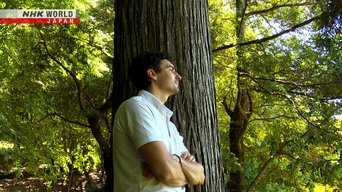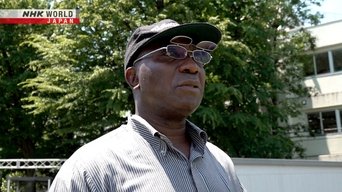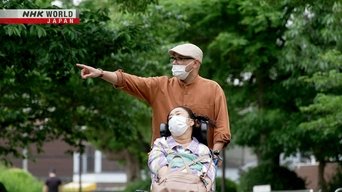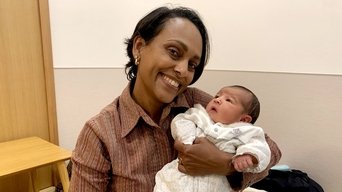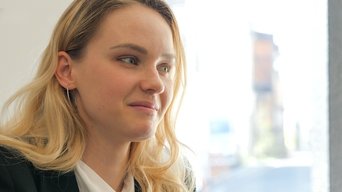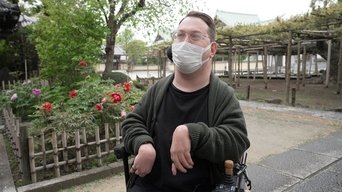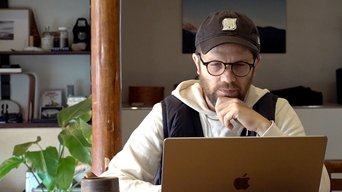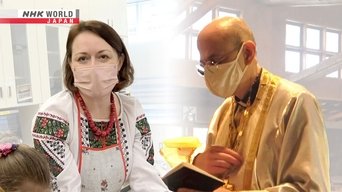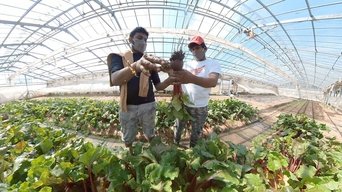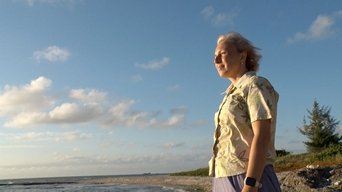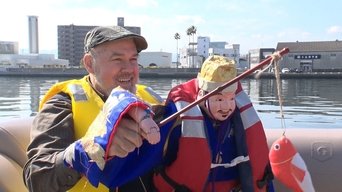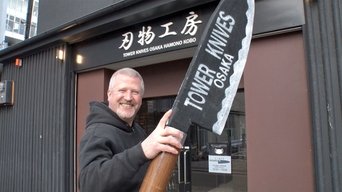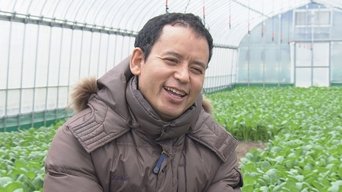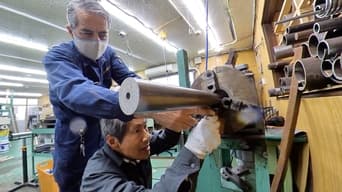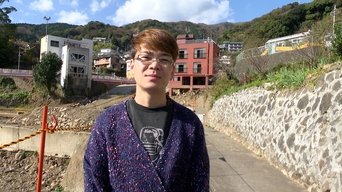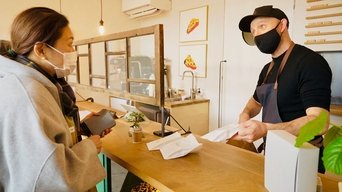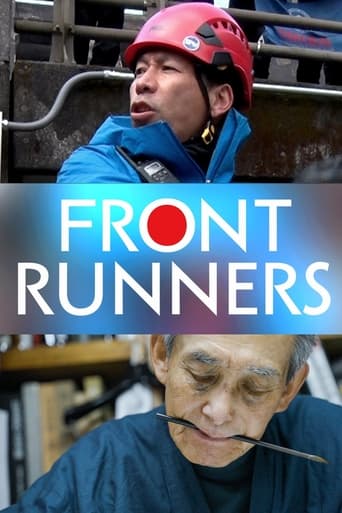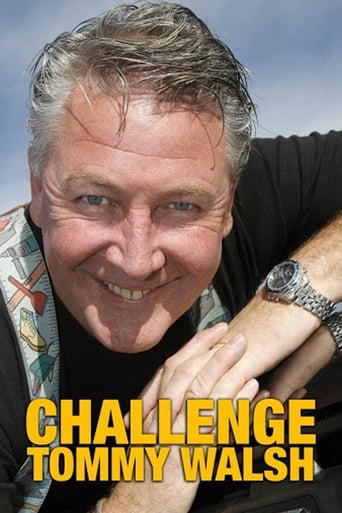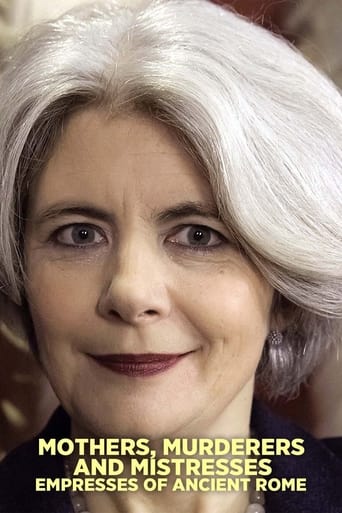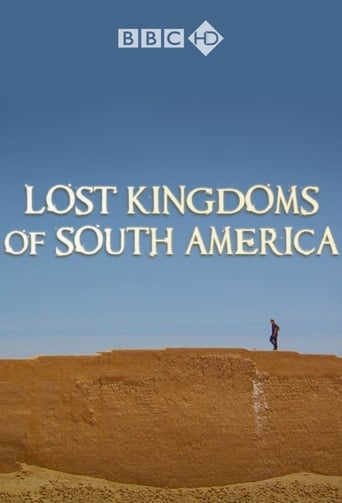Where We Call Home Season 3
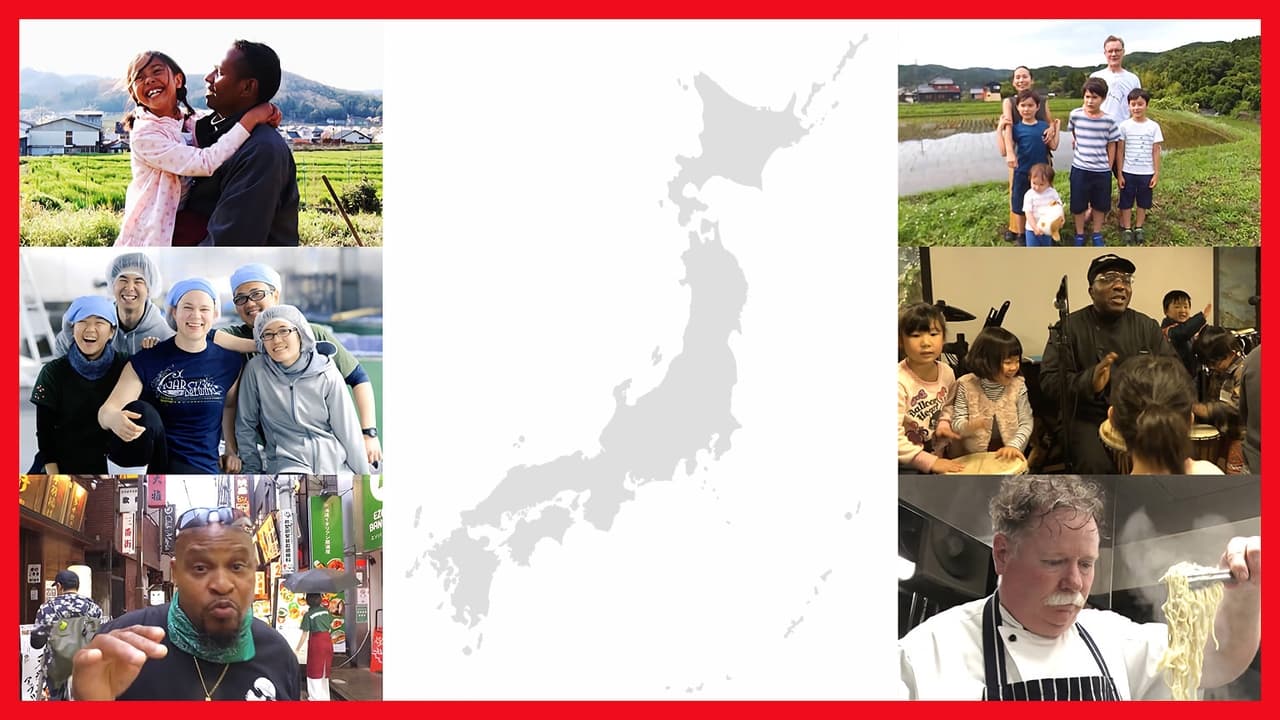
People from around the globe who put down roots in Japan offer a glimpse into their lives and the hardships they face in Japanese society.
Watch NowWith 30 Day Free Trial!
Where We Call Home
2020
People from around the globe who put down roots in Japan offer a glimpse into their lives and the hardships they face in Japanese society.
Watch Trailer
Where We Call Home Season 3 Full Episode Guide
We revisit the Ukrainian families who came to Nagano Prefecture in April 2022 to flee the war in their country. The kids are students of Zendokai Karate, the founder of which invited them to Japan. The oldest of the boys is 14-year-old Artem who came with his mother. Six months later, the young martial artists are getting used to life in Japan, and their mothers have found work. However, worried for their loved ones back home and the children's education, the families must make an important decision.
On this episode, we venture into the woods of Seto in Aichi Prefecture to do some tree climbing with Canadian John Gathright. A professor at a local university, John has long studied the benefits of tree climbing as a fun activity that helps children gain confidence and a positive outlook on life. He organizes events for kids to climb trees and learn about the importance of forests. We also meet Chinese-born Kanai Matsuko, who supports foreigners living in Japan in their search for employment.
This time, we head to Wakayama Prefecture to take in the beauty of Japanese nature captured by German-born Dominik Schmitz, a professional gardener who introduces esthetic elements from his homeland into traditional Japanese landscaping. We meet up with Dominik as he welcomes his first autumn season since he began working in the gardens of Nishimuro-in Temple, located at a World Heritage site. We also visit the workplace of Filipino Clark Ken Sacaon, a welder in Komatsu, Ishikawa Prefecture.
The aging of the population and labor shortages are some of the biggest issues Japanese agriculture is currently facing. On this episode, we meet Tamir Blum, a young Israeli man who's working to lighten the workload of Japanese farmers ... with robots! From his company office in Chiba Prefecture, he and his team are developing a robot that he hopes will help farmers nationwide with physically-demanding tasks. Later on, we drop by an event in Tokyo to watch UK-born street performer Chris Peters in action.
On this episode, we head to Mitoyo in Kagawa Prefecture to meet French-native Jerome Rupp who grows Shine Muscats, a variety of high-end grapes born in Japan. Cultivating the luxury fruit is painstaking work that requires meticulous care. After training under a mentor, Jerome finally harvested his first grapes last year. However, some of them had been damaged by a typhoon. How will the fruit of his labor fare this season? Later on, Danish Jonas Berg introduces his work as a pipe organ builder in Tokyo.
This time, we meet American Thomas Kloepfer, a farmer living in Onomichi, Hiroshima Prefecture, where he revived abandoned farmland to grow all sorts of vegetables. His new project is a café that will feature his produce and bring the local community together. But this year's scorching summer has been hard on his crops. We follow Thomas in his efforts to overcome this obstacle and keep his dream alive. We also visit a brewery in Yamanashi Prefecture, where Richard Leglise, also from the US, crafts barrel-aged beer.
On this episode, we meet US-born Tim Jones in the town of Kuromatsunai in Hokkaido Prefecture. A veteran cattle farmer from Texas, Tim was 68 when two years ago, he and his Japanese wife decided to move to her home country to raise cows. In Japan where marbled fatty beef is the gold standard, will Tim be able to sell his leaner grass-fed meat? Join us to find out. We also visit a construction site in Osaka Prefecture where Vietnamese Tran Ngoc Son works as a carpenter under the Technical Intern Trainee program.
This time, we visit Hiroshima Prefecture to meet Ukrainian-born Hiraishi Olena and her son, budding violinist Eishin. Since Russia began invading Olena's home country, she and Eishin have been organizing charity concerts to provide support for Ukraine. They now prepare to send a message of peace to the world with a special concert in which Eishin will play a violin that survived the nuclear bombing of Hiroshima. We also meet UK-native Sally Hancox, who crafts beautiful indigo dye creations on Awaji Island.
We visit Kochi City in Kochi Prefecture to meet US-native Owen Wade, a member of a local business owners' association. With the declining population, the opening of supermarket franchises and the pandemic, small shops have been struggling. We follow Owen in his efforts to reinvigorate his town of adoption, particularly with the popular Yosakoi Festival, held for the first time in three years. We also drop by a soba noodle shop in Zushi, Kanagawa Prefecture, that's run by Bangladesh-born MD Chowdhury.
On this episode, we go to Kitanakagusuku Village in Okinawa Prefecture to meet US-born Alex Hopson, who works at a restaurant that serves a kind of soup with an unusual main ingredient - venomous sea snake! It's a dish that dates back to when the Ryukyu Kingdom ruled over Okinawa. Alex has made it his mission to preserve this unique soup and the local culinary culture. We also visit a language school in Hiroshima Prefecture where Benjamin Stringer, also from the US, cleverly combines English and piano lessons.
The biwa is a Japanese string instrument with a long history, and the 130-year-old chikuzen biwa is a relatively more modern type originated in the city of Fukuoka, which is where we meet Italian Doriano Sulis, a specialist in the crafting and repair of the instrument. He's in fact one of the few remaining artisans capable of doing so. We follow him in his efforts to ensure his craft endures. We also drop by a cosmetics store in Chiba Prefecture where Chinese-born Yi Liu works as the assistant manager.
On this episode, we meet US-born Shelby Brown in the city of Nagai in Yamagata Prefecture. Shelby is passionate about kendama, a traditional Japanese toy with which one can do many spectacular tricks, and that's now popular worldwide. Shelby hopes to help enliven his beloved town of adoption through kendama. We follow him as he's about to take part in the Kendama World Cup. We also take a look at the beautiful flower arrangement work of Canadian Daniel Patterson, an ikebana artist in Yokohama.
This time, we visit Toyama Prefecture to meet US-born Jack Lee Randall, a weaver of tales for children using shadow puppets. With an overhead projector, paper cutouts, his creativity and his audience's imagination, he adds his own twist to beloved fairy tales, much to the children's delight. We follow Jack as he collaborates with musicians for a live shadow performance like he's never done before. We also tag along with Chinese-native Weng Fei, who operates a concrete pump truck in Gifu Prefecture.
On this episode, we head to the forested mountains surrounding the village of Totsukawa in Nara Prefecture to meet French-born Jolan Ferreri. A lover of the woodlands, Jolan works to invigorate the region with his creation, an exciting aerial recreational park held in suspension among the trees dubbed the Village in the Sky. We also visit Yugawara where Thai-native Manutchaya Chaopreecha works at the local tourist information center to promote this famous hot-spring resort town in Kanagawa Prefecture.
On this episode, we revisit Ghana-native Tony Justice, who runs a canteen for children from families in financial difficulties and single-parent households in Kanagawa Prefecture. Looking to keep his project going amidst the pandemic, he decided to hit the road! With a food truck, he turned his diner into a mobile canteen. We tag along as Tony prepares to deploy his diner on wheels in Tokyo! Later on, we also meet Filipino Bueno Ryan, who raises cows on a cattle farm in Chiba Prefecture.
This time we head to mountainous Nagano Prefecture where 13-year-old Artem Tsymbaliuk fled from the war in his homeland of Ukraine with his mother. Practicing Zendokai Karate since childhood, Artem was invited to Japan by the founder of this unique martial art style. Two months after his arrival, Artem takes part in a prefectural tournament. How will he fare? Join us to find out! We also visit Osaka Prefecture to follow Malaysian Yip Xue Qian in his marketing work for a world-renowned manufacturer of snack foods.
On this episode, we meet Yevhenii Petrenko and his wife Nagasawa Mie – two professional dancers for a famous ballet company in Ukraine. This February, as the couple and their baby boy were visiting Mie's mother in Japan, Russia began its invasion of Yevhenii's home country. We follow the couple as they rehearse for a charity ballet performance that they organized to support Ukraine. We also visit a sushi restaurant in Tokyo where Chinese-born Wen Shuqi trains to become a sushi chef.
On this episode, we visit Myanmar refugee Aung Myat Win who runs a restaurant in Osaka Prefecture that serves the authentic taste of his home country. Win also manages a business that provides care to people with disabilities. And with the current situation in their homeland, Win is offering support to Myanmar nationals in Japan who are struggling like he was when he arrived in the country over 20 years ago. Later on, we meet US-born James Johnson, who works for a tea wholesaler in Shizuoka Prefecture.
For women, giving birth abroad can be a daunting prospect. Luckily, the Brazilian expectant mothers of Hamamatsu in Shizuoka Prefecture have an invaluable partner - fellow Brazilian Ludmilla Hirata. She's a doula, a profession still relatively unknown in Japan, who provides emotional support and advice to women before, during and even after childbirth. Join us to find out more. Later on, we also "shed light" on the work of French-born Jeff Rudge, who makes traditional Japanese paper lanterns in Ibaraki Prefecture.
This time, we meet Ukrainian Anna Kreshchenko, an entrepreneur in Kyoto who creates apps that provide support for health issues unique to women. She's backed by her scientist business partner and a team of IT specialists, many of whom are from and live in Ukraine. They're among those Anna has helped find work amid the current situation in their homeland. Later, we visit a bakery in Kamakura where Aki Lappalainen bakes bread in the style of his home country of Finland.
In 2020, Yamashita Alan, a Brazilian of Japanese descent and former Japanese champion of Brazilian jiu-jitsu, founded a cultural center in Imizu, his town of adoption in Toyama Prefecture. It's a place where the foreign community loves to gather to meet and practice all kinds of sports and activities. We follow Alan as he tries to encourage the Japanese locals to join in on the fun. We also visit a farm in Gunma Prefecture where Indonesian, Miko Alasta is in charge of growing lettuce and harvesting strawberries.
On this episode, we meet Canadian Josh Grisdale. A wheelchair user due to cerebral palsy, Josh works for a social welfare group in Tokyo's Edogawa Ward, and runs a website for foreigners with disabilities that introduces a broad range of locations in Japan with barrier-free accessibility. He also works to promote a better social understanding of people with disabilities. Then later on, we watch the swift handiwork of Vietnamese Hoang Quoc Viet, a professional wallpaper installer in Saitama Prefecture.
On this episode, we discover a lesser-known side of Tokyo with US-born magazine Editor Lucas Badtke-Berkow. After introducing the cool and youthful culture of the capital with the hit magazine "TOKION," he now focuses on the "good old Japan" he's grown to love over the years. His latest project sets the spotlight on the city's oldest inhabitants – trees. Later on, still in Tokyo, we drop by a nail salon for a bit of nail art with Myanmar-native Nial Khan Cing, also-known-as Non Non.
On this episode, we meet two Ukrainians supporting their compatriots in Japan, from before and after Russia began to invade their homeland. The archpriest of Japan's first Ukrainian Orthodox Mission, Paul Koroluk, and Oksana Piskunova, a teacher for a Ukrainian study program, talk about their lives and how the current events are affecting them and their Ukrainian community in Japan. We also visit Kochi Prefecture, where Dutch-born Rogier Uitenboogaart makes traditional Japanese paper.
We visit Ibaraki Prefecture where 2 Sri Lankan businessmen work to support their compatriots in need. At his welding factory, Chamila trains his all-Sri-Lankan staff in valuable skills that will help them through the difficulties brought on by the pandemic. Meanwhile, Sineth provides food and shelter to fellow Sri Lankans and assists them in getting a visa to work in farming. We also meet Korean Paek Sumin, who works for an automaker's subsidiary to broaden the clientele of their car sharing service.
On this episode, we visit Nakanoshima Island off the coast of Shimane Prefecture to meet Myanmar-born Aung Moe Oo, who leads a fishing enterprise. As young people leave the island to live in urban areas, he worries about the lack of successors to the local fishing industry. We follow him as he mentors a young woman who left her music career in Tokyo to become a fisher. We also tag along with South African Carli Kuschke on a day in her work creating samples for a plastering company in Tokyo.
This time, we visit Okinawa Prefecture to meet Ukraine-born Katarin Honma, whose soul was shaken by Russia's invasion of her homeland. An engineer who's recently begun baking bread with carrots that are broken or too misshapen to be sold as is, Katarin stays strong with the support of Okinawan people whose memories of World War II overlap with the situation in Ukraine. We also drop by Tokyo to speak with US-native Emily Balistrieri, who translates Japanese novels and manga to English for a major publisher.
On this episode, we meet 2 gray-bearded North Americans passionate about Japanese traditional arts. First, we head to Tokushima Prefecture, where US-born Martin Holman leads a troupe that performs a local centuries-old form of puppet theater called Awa Ningyo Joruri. Just like Martin, about half of the group's members are non-Japanese. Then we visit the Tokyo workshop of Canadian David Bull, a craftsman who with his team of artisans produces Japanese woodblock prints following a time-honored method.
In Osaka City is a kitchen knife shop run by Canadian Bjorn Heiberg. Promoting the quality of Japanese knives and working with local craftspeople, he's helped reinvigorate the market, which had been dominated by cheaper all-purpose imports. But the pandemic brought unprecedented hurdles for his business. We follow Bjorn in his efforts to overcome these new difficulties. Also in Osaka, we visit a firm trading in machinery where Dominican Jose Bodden is in charge of importing robots from abroad.
This time, we follow Dharma Lama, a mandala artist born and raised at a temple in his home country of Nepal who now runs a vegetable farm in Toyama Prefecture. Concerned over the future of agriculture in the region, Dharma works hard to contribute to the farming community. He set up a food processing plant to further add value to local produce. But the road to success is not without its challenges. Join us to find out more. We also meet Yang Haoyue from China who works at a popular sundries store in Tokyo.
On this episode, we visit Kamata in Tokyo, which is home to many small factories expert in machining parts for a variety of industries. In recent years, however, the lack of successors has been forcing many manufacturers to close down. But Iranian-born Mirhoseini Ahmad, a veteran metalworker and factory owner, is making efforts with other local craftspeople to give the area back some of its former glory. We also meet Bill Leonguerrero from Guam, a confectioner of Japanese sweets in Ehime Prefecture.
This episode takes us to Shiga Prefecture, home of Lake Biwa, the largest lake in Japan. It's there that a few years ago Italian-born Enrico Cupri began working at a sake brewery. Fueled by his love of sake and his determination to master the brewing craft, he diligently trains under the mentoring of Tomita Yasunobu, the brewery's 15th-generation owner. But the road to sake mastery has its obstacles Enrico must overcome. We also meet American Andrew Gibler, who works at a real estate agency in Hiroshima Prefecture.
On July 3rd 2021, massive mudslides caused by heavy rainfall swept through the town of Atami in Shizuoka Prefecture, leaving devastation in their wake. A day before, Chinese-born Xu Haoyu had just moved into a house he'd bought there. Like many others, his home was destroyed. Six months after the disaster, we follow Haoyu in his efforts to get back on his feet. We later meet Xia Dezheng, also from China, who develops ready-to-eat meals for the elderly at a major food product manufacturer in Hiroshima Prefecture.
Join us as we visit Naganuma in the northern prefecture of Hokkaido where Australian Karl Diercke runs a pie shop. Among his crusty creations are meat pies, which offer a taste of Karl's homeland but with beef produced locally. We follow him as he consults with the region's farmers to find a way to cope with the shortage in ingredients and decrease in customers winter brings. We also meet Vietnamese Tran Tuan Anh, the manager of a Tokyo produce store with an international staff and clientele.
Free Trial Channels
Seasons


